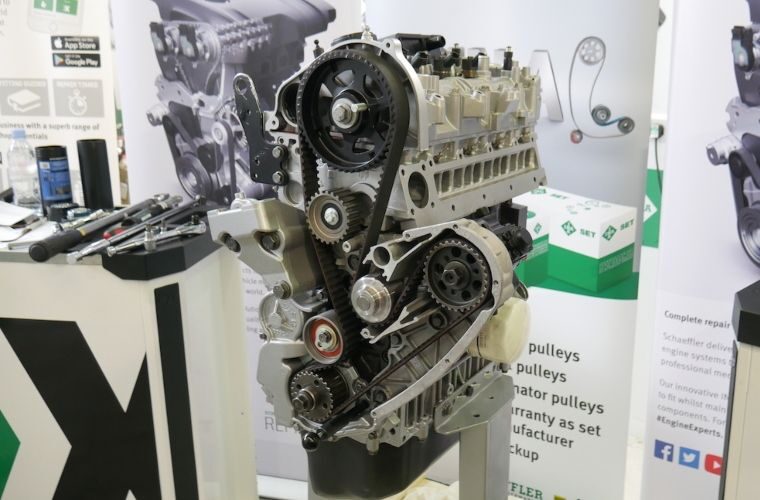As part of its mission to empower technicians and enable them to carry out first class professional repairs, REPXPERTs Andrew Vaux and Tim Adams have joined forces to present a new Schaeffler technical video showing the correct installation of the timing belt tensioner on the popular 2.3-litre diesel engine in the Fiat Ducato and Iveco Daily.
As the duo explain, it is not unusual for vehicle manufacturers (VMs) to change the design of certain components during the production life of a vehicle, and this is the situation with the timing belt tensioner used on this engine, which was first produced in 2003.
However, this design change has led to confusion as to the correct tensioner set-up procedure, with potentially catastrophic consequences for the units that have not been set correctly.
Technicians should always follow INA’s 4T installation principles (temperature/ tools/ torque/ tension) – first ensuring the engine is at an ambient temperature of between 18-20ׄ°C, then tighten the nuts and bolts to the VM’s torque specifications before correctly tensioning the belt, always using the correct tool of course.
The different tensioner types are shown in the image, one of which features a single notch on the front plate with the hexagon for the Allan key, the other with multiple notches.
As they undertake the two procedures, which are both due every 144,000 miles or five years, whichever is soonest, the REPXPERTs explain that it is only the tensioner set-up that is different, the rest of the process, including the number of complete engine rotations carried out between setting the high and nominal tension (eight) and when checking the final valve timing following the installation (two), remain the same.
The first example is the multi-notch tensioner, which once the bolt has been slackened, requires the Allan key to be turned anti-clockwise until the notch closest to the hexagon aligns with the indent, before the bolt is tightened to 36Nm and the camshaft pulley bolt to 130Nm.
This is the high tension position and is required in order to bed the belt into the pulleys and tensioner.
After the locking tools have been removed and the engine rotated, the locking tools are used again and the tensioner set to its nominal tension, which is with the middle notch aligned with the indent.
The second example, with the single notch tensioner, which is also rotated anti-clockwise, differs inasmuch as the single notch is taken past the indent until it can no longer be seen, before the bolt is tightened to 36Nm.
Following the same locking tool removal, engine rotation, and refitment of locking tools procedure, the tensioner bolt is slackened and the tensioner backed off clockwise, so the notch passes the indent, before finally being positioned in line with the indent and secured to 36Nm, before the concluding timing position check is undertaken.
By following the appropriate procedures for these tensioners, made clear by the REPXPERTs during the video, technicians can now tackle either installation with complete confidence.
To find out more about INA’s 4T guidelines and to download VM installation instructions including torque settings, plus labour times and more, select ‘more details’ below or download the REPXPERT app on iOS and Android devices.








Home Page › Forums › Watch: REPXPERTS reveal correct tensioner set-up for Iveco 2.3-litre diesel engine